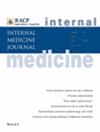Impact of sulfonamide allergy label on clinical outcomes of acute cystitis: a retrospective matched cohort study
Abstract
Background
Cystitis is a common infection in an otherwise healthy individual. Sulfonamide antibiotics are first-line treatment options. Sulfonamide allergy label (SAL) is the second most common antibiotic allergy label in electronic health records, yet its impact on clinical outcomes in patients with cystitis is not well-characterised.
Aims
The aim of this study is to characterise the impact of SAL on clinical outcomes of acute cystitis.
Methods
In this retrospective matched cohort study utilising the TriNetX US Collaborative Network (Cambridge, MA, USA), adult patients with cystitis were categorised based on their SAL status. The 28-day risks of acute pyelonephritis and Clostridium difficile infection and the risk of recurrent or relapsed cystitis (defined as cystitis 15–28 days post-indexed cystitis) were contrasted. Antibiotic prescription practices within 14 days of the index cystitis were also compared.
Results
When comparing 19 767 patients with cystitis and SAL to an equal number of matched controls, more patients with SAL had acute pyelonephritis (RR 1.27; 95% CI 1.08–1.48; P = 0.003; corrected P = 0.027) within 28 days of index. More patients with SAL developed recurrent/relapsed cystitis 15–28 days post-indexed cystitis (RR 1.19; 95% CI 1.08–1.31; P = 0.001; corrected P = 0.009) as compared to controls. SAL altered antibiotic prescription practices with under-utilisation of trimethoprim and sulfamethoxazole and increased utilisation of alternative antibiotics, including fluoroquinolones and nitrofurantoin, which was associated with an increased risk of Clostridium difficile infection.
Conclusions
SAL alters antibiotic prescription practices and is associated with a slightly increased risk of poor outcomes in adult patients with cystitis.


 求助内容:
求助内容: 应助结果提醒方式:
应助结果提醒方式:


